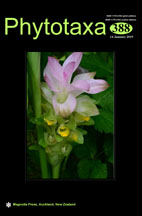Abstract
The genus Chlorella (in its traditional sense) is polyphyletic and belongs to at least twelve independent lineages of the Trebouxiophyceae and Chlorophyceae. Most of the aquatic species belong to the Chlorella and Parachlorella clades (within the so-called Chlorella-lineage of the Trebouxiophyceae), or to the genera Scenedesmus and Mychonastes (within the DO-group of the Chlorophyceae) according to phylogenetic analyses of the SSU and ITS rDNA sequences. In contrast to the aquatic species, the terrestrial strains investigated so far form a monophyletic lineage (Watanabea-clade) within the Trebouxia-lineage of the Trebouxiophyceae. Several genera with Chlorella-like morphology (Chloroidium, Heterochlorella, Watanabea, Kalinella, Viridiella and others) belong to the Watanabea clade. We studied 22 strains isolated from soil, bark, and artificial hard substrates, which have been traditionally identified as Chlorella luteoviridis or as unidentified Chlorella. To clarify the taxonomical status and intrageneric diversity of this group, we used an integrated approach (molecular phylogeny of SSU and ITS rDNA sequences, secondary structures, DNA barcoding, and morphology) including the ecological distribution. All investigated strains showed a low phenotypic plasticity, but a high genetic diversity, which could be only resolved in complex phylogenetic analyses based on the secondary structures of the investigated genes. Considering these results, we reestablished the genus Jaagichlorella for Heterochlorella and Heveochlorella, and proposed new combinations (J. luteoviridis, J. hainangensis, J. roystonensis, and J. sphaerica) as well as the new species, J. africana.

